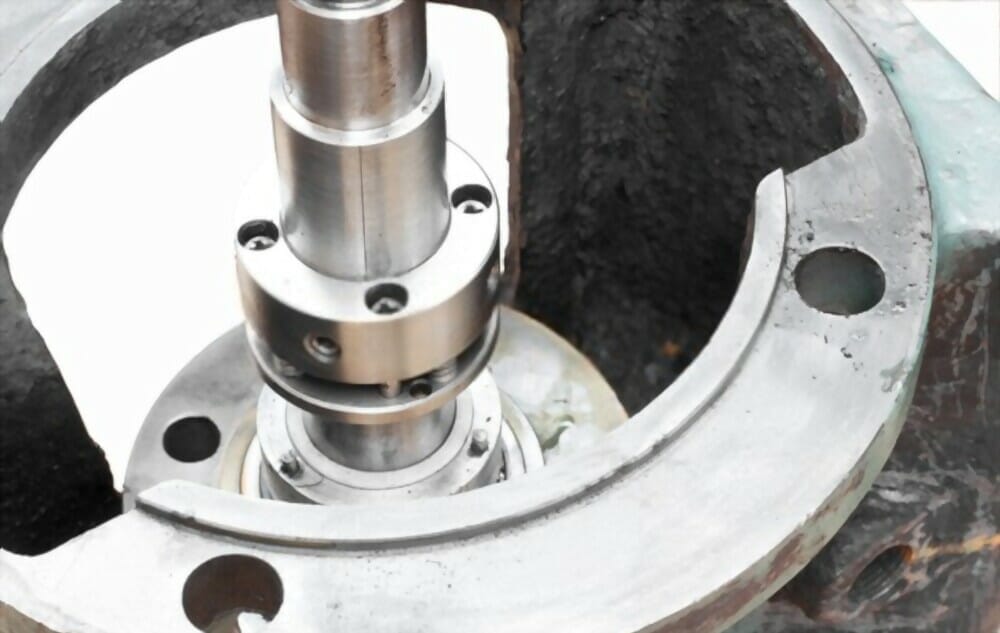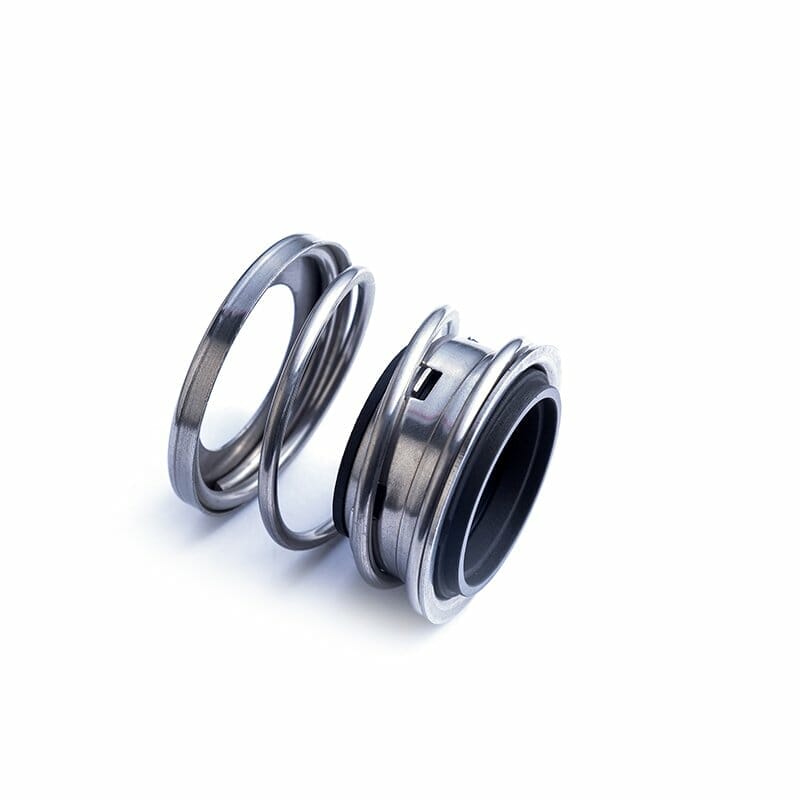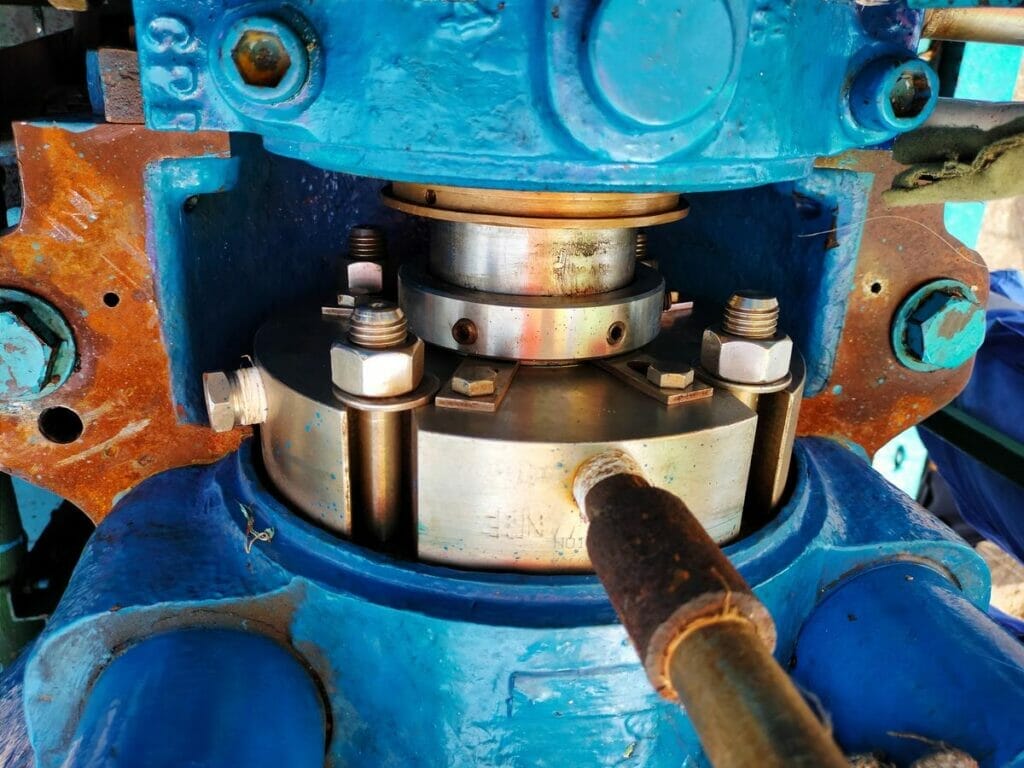Have you ever wondered about the differences between component and cartridge mechanical seals?
In this blog post, we’ll explore the key distinctions between these two types of seals, including their design, installation, and maintenance requirements.

What Is a Cartridge Seal
A cartridge seal is a pre-assembled mechanical seal unit that combines the sealing components, sleeve, and gland into a single, ready-to-install assembly. This type of seal is designed for quick and easy installation, as it can be fitted onto a shaft or pump without requiring significant disassembly or seal component handling.
Advantages of Cartridge Seal
- Simplified installation: Cartridge seals are pre-assembled, allowing for quick and easy installation without the need for extensive disassembly or specialized knowledge of seal component placement.
- Reduced installation time: The pre-assembled design of cartridge seals significantly reduces the time required for installation, minimizing equipment downtime and increasing productivity.
- Improved reliability: With sealing components correctly positioned and aligned within the cartridge, the risk of improper installation or damage to seal faces is minimized, resulting in improved seal reliability and performance.
- Longer seal life: The precise alignment and pre-assembly of cartridge seals contribute to extended seal life by reducing wear and tear on the sealing components.
- Reduced leakage risk: Cartridge seals are designed to maintain optimal sealing performance, minimizing the risk of leakage and enhancing overall system efficiency.
- Standardization: Cartridge seals are available in standard sizes and configurations, making it easier to find a suitable replacement seal for a given application.
Disadvantages of Cartridge Seal
- Higher initial cost: Cartridge seals are generally more expensive than component seals due to their pre-assembled design and additional components, such as the gland and sleeve.
- Limited customization: Cartridge seals are typically available in standard sizes and configurations, which may limit customization options for specific applications with unique requirements.
- Increased inventory costs: Stocking cartridge seals for various equipment types and sizes can lead to higher inventory costs compared to component seals, which offer more flexibility in mixing and matching components.
- Potential for increased shaft wear: In some cases, the design of cartridge seals may result in increased shaft wear due to the presence of additional components, such as the sleeve, which can rotate with the shaft.
- Reduced flexibility in seal face materials: Cartridge seals often have pre-determined seal face materials, limiting the ability to customize or optimize seal face combinations for specific applications or process conditions.

What Is a Component Seal
A component seal, also known as a component mechanical seal, is a type of mechanical seal that consists of separate parts which are assembled together to create a complete sealing unit. The typical components include a stationary seat, a rotating seal ring, secondary seals such as O-rings or wedge seals, and hardware like gland plates, collars, and springs.
Advantages of Component Seal
- Adaptability: Component seals can be customized for various equipment and applications, tailoring materials, sizes, and configurations to specific needs.
- Cost Benefits: Ideal for smaller, less complex equipment or where frequent modifications are needed. Only worn or damaged parts are replaced, lowering maintenance costs and inventory needs.
- Ease of Installation and Maintenance: Can be assembled and installed on-site by skilled technicians without specialized tools, beneficial in remote or emergency situations.
Disadvantages of Component Seal
- Potential for Incorrect Assembly or Installation: Errors during assembly, such as misalignment or incorrect sizing, can lead to seal failure, increased leakage, and equipment damage.
- Higher Technical Expertise Required: Proper installation and maintenance require a thorough understanding of seal design, materials, and operating conditions.
- Longer Installation and Maintenance Time: Assembling components on-site takes more time than replacing pre-assembled cartridge seals, leading to longer equipment downtime and higher maintenance costs.
- Limited Suitability for Extreme Conditions: Component seals may not be suitable for extreme operating conditions or stringent emissions requirements, where advanced cartridge seals are more appropriate.

The Difference between Component and Cartridge Seals
Application
Component seals are typically used in general industrial applications with lower pressure and temperature requirements. They offer flexibility in design and can be customized for specific applications.
Cartridge seals are commonly used in more demanding applications, such as those involving high pressure, high temperature, or hazardous fluids. They are pre-assembled and designed for specific equipment, making them suitable for critical processes.
Installation
Installing component seals requires skilled technicians to assemble and set the seal face load, which can be time-consuming and prone to errors.
Cartridge seals, being pre-assembled and pre-set, simplify the installation process. They can be installed quickly and easily, reducing the risk of incorrect installation and ensuring consistent performance.
Interchangeability
Component seals offer greater interchangeability, as individual components can be replaced or upgraded without replacing the entire seal assembly. This allows for more flexibility in maintenance and repairs.
Cartridge seals, due to their pre-assembled design, have limited interchangeability. If a component fails, the entire cartridge may need to be replaced, which can be more costly and time-consuming.
Inventory Management and Parts Availability
With component seals, a wider range of spare parts must be kept in inventory to accommodate various seal configurations. This can lead to increased inventory costs and complexity in managing spare parts.
Cartridge seals simplify inventory management, as only complete cartridges need to be stocked. This reduces the number of spare parts required and simplifies the ordering process, ensuring the right parts are readily available when needed.
Maintenance
Maintaining component seals requires skilled technicians to disassemble, inspect, and replace individual components as needed. This process can be time-consuming and may result in extended downtime.
Cartridge seals are designed for easier maintenance, as the entire cartridge can be quickly replaced without disassembly. This minimizes downtime and simplifies the maintenance process, even for less experienced personnel.
Cost
The initial cost of component seals is generally lower compared to cartridge seals, as individual components can be purchased separately. However, the total cost of ownership may be higher due to increased installation time, maintenance requirements, and inventory costs.
Cartridge seals have a higher initial cost, as they are pre-assembled and designed for specific applications. However, they can offer a lower total cost of ownership through simplified installation, reduced maintenance, and streamlined inventory management.
Performance
The performance of component seals depends heavily on proper installation and maintenance. Incorrect assembly or inadequate maintenance can lead to reduced seal life and increased leakage.
Cartridge seals, being pre-assembled and pre-set, provide consistent performance and reliability. Their design minimizes the risk of installation errors and ensures optimal seal performance, resulting in longer seal life and reduced leakage.
FAQs
Do cartridge seals offer better performance than component seals?
Performance depends on the specific application and seal design. However, cartridge seals often provide better performance due to their precise, factory-controlled assembly.
Which type of seal is better for high-pressure applications?
Cartridge seals are generally better suited for high-pressure applications due to their robust, pre-assembled design, which can withstand higher pressures more effectively than component seals.
Can component seals be upgraded to cartridge seals?
In many cases, component seals can be replaced with cartridge seals, but it may require modifications to the equipment and should be evaluated on a case-by-case basis.
In conclusion
Choosing between component and cartridge mechanical seals depends on specific application requirements. Consider factors such as ease of installation, maintenance, and cost-effectiveness.
Consult with a trusted seal manufacturer or supplier to determine the best solution for your needs. Don’t hesitate to reach out for expert guidance.


